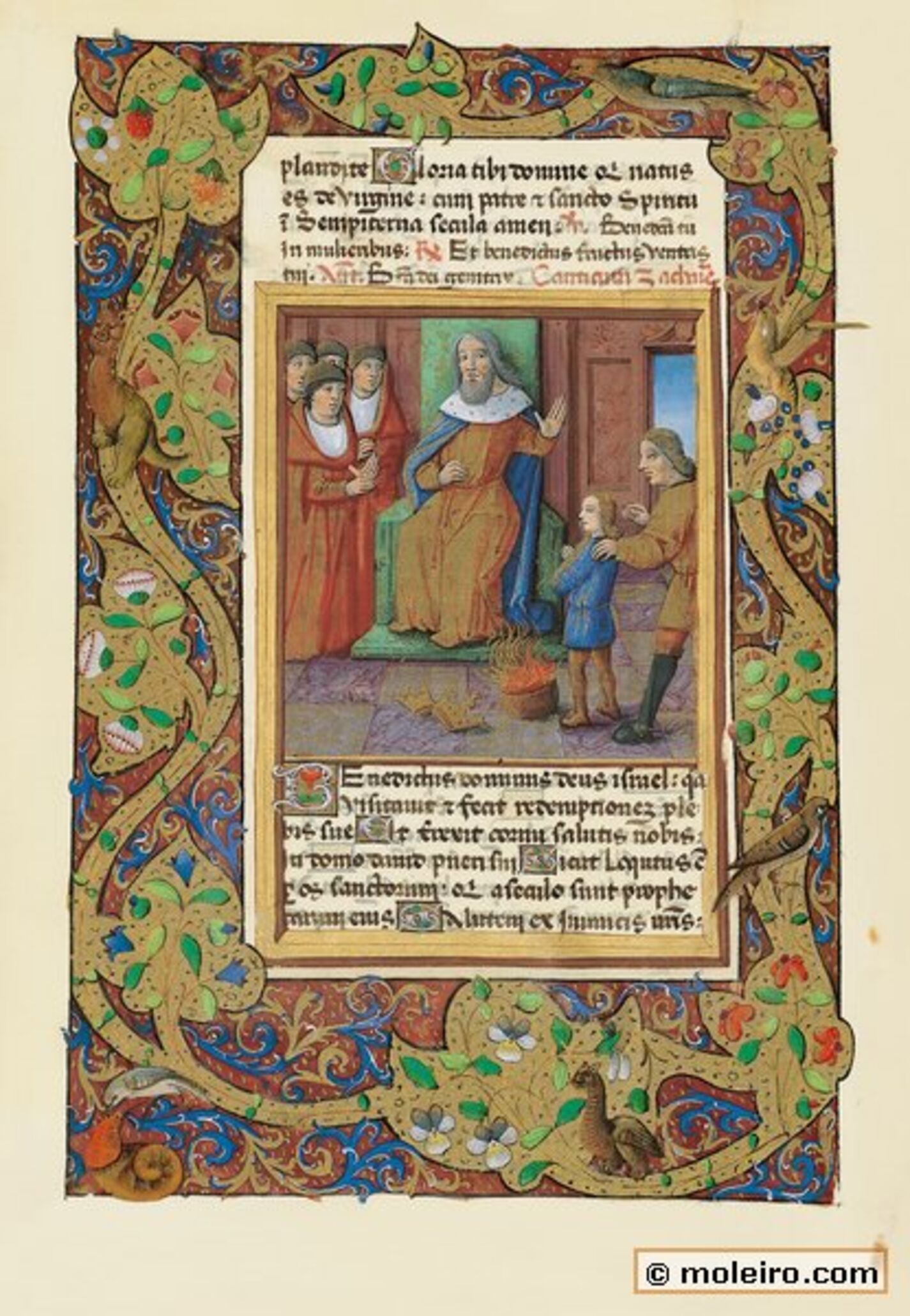This illustration, preceding the Canticum Zacharie “Benedictus dominus deus Israel” (Luke 1: 68), depicts the king upon his throne garbed in green attire embroidered in gold. The elderly monarch, as suggested by his grey hair and beard, wears a long tunic and a blue cloak with a large ermine collar. The gesture of his right hand is possibly one of agreement. He is accompanied by four advisers wearing red cassocks over a white tunic. One of them makes a gesture similar to that of the king. The last figure is a man presenting the boy Moses to the king. The boy’s hands are joined, and both he and the accompanying person are dressed in short tunics. The man wears boots over his leggings and the boy, just leggings. Next to the boy are a bowl of fire and two crowns on the floor.
This event in the life of Moses is apocryphal since it is not included in the Holy Scriptures, although it does feature in the versified Bibles by Hermann de Valenciennes and Geffroi of Paris. This motive was introduced into medieval art belatedly due to the influence of Speculum Humanae Salvationis, based on Jewish Antiquities by Flavius Josephus and Church History by Peter Comestor, with the addition of a prefiguration of the Slaughter of the Innocents and the Fall of the Idols in Egypt when the boy Jesus went by. As legend would have it, once, when playing as a young boy, Moses threw a crown decorated with a stone engraved with the image of the god Ammon. According to another version, he put it on his head. One of the pharaoh’s ministers dreamt that Moses would seize power, and advised the pharaoh to kill him. Another minister however advised him to subject Moses to an ordeal consisting of presenting the boy with two goblets, one containing a ruby ring and the other, a burning coal. Were the boy to choose the first, he would be considered to be guilty and would be killed, but if on the other hand he chose the second goblet, he would be pardoned. Under the guidance of an angel, the boy raised the burning coal to his mouth: an accident that resulted in his finding it difficult to speak. This scene – which can be seen in the fourteenth-century Psalter of Queen Mary – is far from common.
